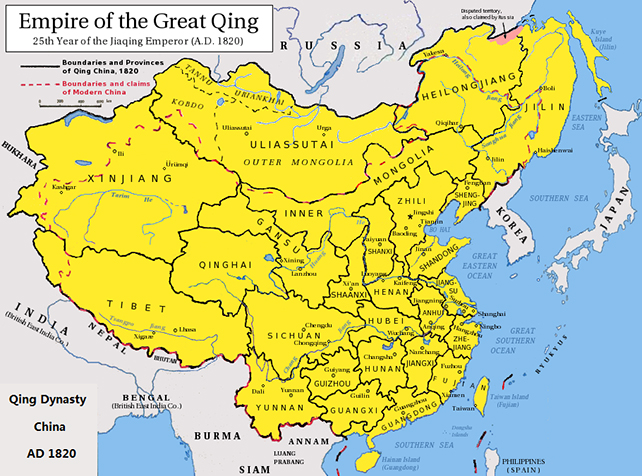The Qing dynasty in China, despite its incredible socio-political success across two centuries, had collapsed to nothing by 1912. The reasons for the decline of the imperial system have long been debated, and a new study highlights three crucial factors that played a role – each of which are scarily familiar to us today.
Led by the Manchu people, the Great Qing took control of Beijing in 1644 and reached its greatest extent in terms of area by 1760. In 1820, the imperial dynasty had made China the world's largest economy, but trouble lay ahead.
Here, researchers from Osaka University in Japan, Shanghai Normal University in China, the Evolution Institute and the University of Washington in the US, and the Complexity Science Hub Vienna in Austria, used structural-demographic theory (SDT) to chart the fall of the Qing dynasty.

The theory, which is based on mathematical models, splits societies into four sections: the state, the elites, the generation population, and an extra component that measures political instability. Each section influences the others in a dynamic way.
"We argue that the four-fold population explosion peaking in the 19th century, the growing competition for a stagnant number of elite positions, and increasing state fiscal stress combined to produce an increasingly disgruntled populace and elite, leading to significant internal rebellions," write the researchers in their published paper.
Population growth led to overcrowding, poverty, and an overflow of qualified bureaucrats unable to rise up the ranks, the researchers say. The cost of keeping order, adding to burdens associated with depleting silver reserves and opium imports, exacerbated the problems even further.
It seems likely that the Qing rulers were fully aware of these problems – they just didn't act smartly or quickly enough. A combination of internal uprisings and external geopolitical challengers ultimately sealed the fate of the dynasty.
"This clearly demonstrates that any economy must be vigilant as circumstances can change, and sometimes rather rapidly," says Georg Orlandi, from Osaka University.
The team draws parallels between the conditions of the Qing dynasty's fall and some of the issues and instabilities in today's societies, including rising inequality and diminishing opportunities to progress – problems that governments would be wise to address.
That's easier said than done though. These stresses often appear over the longer term, whereas governments are typically changing and evolving over the short term, and that means the fate of the Qing dynasty could well be repeated elsewhere.
"It's crucial to comprehend the origins of such instabilities," says Peter Turchin, from the Complexity Science Hub in Vienna, Austria. "Assuming it's a thing of the past and can't recur would be a mistake."
"Such changes can indeed happen because the underlying mechanisms bear surprising similarities."
The research has been published in PLOS ONE.
